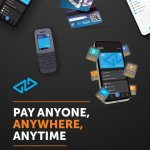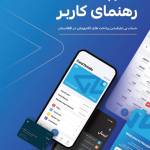WHEN THE TALIBAN took over Afghanistan in August of last year, Fereshteh Forough feared that the group would close her school in Herat, the country’s third-largest city. Code to Inspire, an NGO Forough founded, was teaching computer programming to young Afghan women, and the Taliban oppose secondary education for women.
Months later, the picture is much different — and worse — from what Forough imagined. The school survived, becoming mostly virtual, but has transformed from a coding boot camp into a relief organization. The biggest risk for Forough’s students wasn’t lack of education, it was hunger. Forough looked for a way to provide emergency checks to the women but was stymied by banks that don’t want to risk violating severe U.S. sanctions.
JPMorgan Chase repeatedly blocked her attempts to transfer money, she said, and she grew increasingly alarmed by students who said they couldn’t access cash at local Afghan banks — many of which have closed or imposed strict withdrawal limits. In response, she turned to cryptocurrency to provide monthly emergency payments to help students afford enough food to survive.
“Since September, we’ve been sending cash assistance, about $200 per month, for each family, because the majority of our students have said their family lost their jobs. They are the sole breadwinner of the family,” explained Forough, whose family fled Afghanistan in the early 1980s, during the Soviet occupation, and now lives in New Hampshire. Code to Inspire pays its recipients in BUSD, a so-called stablecoin whose value is tied to the U.S. dollar, and then the women convert it to afghanis, the local currency, at money exchanges. “We created a safe way for our girls to cash out their crypto and pay for expenses, so they can pay for medical expenses and food and everything that’s needed.”
There are several advantages to using crypto: Afghans fleeing the Taliban can take their assets with them without risk. Humanitarian agencies seeking to bypass banks and discreetly avoid the Taliban can provide cash directly to those in need. Smugglers and intermediaries who may steal or try to resell aid packages can be circumvented if aid is given directly through a digital transaction.
“I am still in disbelief that I could receive money without any fear of [it] being confiscated in such a transparent way,” said T.N., a 21-year-old graphic design student in Herat enrolled in Code to Inspire, in a statement to The Intercept. “Creating a BUSD wallet was very easy and it was a delightful experience knowing how fast and in such a private way you can receive money even in Afghanistan.”
WHILE CODE TO INSPIRE is in a uniquely tech-savvy position compared with most Afghan organizations, Forough isn’t alone in thinking that blockchain-based solutions may help Afghans in need in the midst of an unprecedented economic crisis.
Several other NGOs and humanitarian organizations — facing a choice between failed banks still hampered by sanctions and hawala networks of informal money traders that many fear are tied to the drug trade or controlled by the Taliban — are considering the use of cryptocurrency as an alternative.
One American attorney advising international groups in Afghanistan said that his clients are moving closer to experimenting with crypto payments, though he was not at liberty to identify the NGOs and asked for anonymity to protect their identities. Others are stepping up in a more visible way to harness the power of cryptocurrency to deliver assistance.
“You can trade back and forth, send it overseas or receive it overseas, without ever touching banks, without touching the Afghan government or Taliban.”
Sanzar Kakar, an Afghan American raised in Seattle who has worked on commercial projects in Afghanistan, including a local ride-hailing company akin to Uber, created an app. “We’re trying to solve this problem, that 22.8 million Afghans are marching toward starvation, including 1 million children this winter who might die of starvation,” said Kakar. HesabPay, launched in 2019, helps Afghans transfer money using crypto.
“We can’t get money through banks, but 88 percent of Afghan families have at least one smartphone,” said Kakar, who hopes to facilitate money transfers of afghanis, along with USDC, another stablecoin. He is in the process of setting up money-exchanging shops at which Afghans can obtain QR codes or trade crypto for hard currency.
“You can trade back and forth, send it overseas or receive it overseas, without ever touching banks, without touching the Afghan government or Taliban,” said Kakar. “It’s all on the blockchain network.”
A liquidity crisis is at the heart of the growing catastrophe in Afghanistan. Following the pullout of U.S. forces last August, the country was isolated overnight. The U.S. seized assets from the Afghan central bank and ended transfers of U.S. currency. Companies in Poland and France contracted to print the afghani ended shipments. Almost immediately, the Society for Worldwide Interbank Financial Telecommunication, known as the SWIFT system, which underpins international financial transactions, suspended services in Afghanistan. Commercial banks couldn’t lend money, and retail customers couldn’t take their own money out of banks.
The departure of the international community, fearing that any transaction within Afghanistan would violate sanctions on the Taliban, ground the economy to a halt. Nearly four-fifths of the Afghan budget was foreign-funded before the U.S. left.
The Biden administration has issued exemptions to the sanctions for humanitarian aid. These Treasury Department licenses, however, have done little to mitigate the spiraling crisis, as The Intercept has reported. Taliban leaders listed by the sanctions are in charge of senior Afghan government positions, leading many banks to continue to block routine transactions because they conclude that any tax or duty paid to the government could risk violating sanctions. Overcompliance and compliance costs associated with the sanctions have damaged the ability to conduct ordinary commerce in the country, leading to mass unemployment and skyrocketing food and fuel costs.
So though humanitarian aid is technically allowed, restrictions by banks have made it functionally impossible. Several U.S. banks contacted by The Intercept declined to comment on the record about the shut-off of transactions with Afghanistan. “We comply with all economic sanctions laws and regulations and process NGO-related payments accordingly. We have no further information to share,” said a spokesperson for Wells Fargo.
New reports continue to show ghastly consequences of the economic collapse in the country. Parents have sold children into arranged marriages in order to purchase enough food to survive. In Kandahar, a high school teacher recently died of starvation after at least four days of not eating, according to a local human rights watchdog. UNICEF estimates that 3.2 million children face malnutrition and over 1 million face the immediate risk of death by starvation. The United Nations reports that only 2 percent of Afghanistan’s population of 40 million is getting enough to eat.
The Biden administration, while choking off the Afghan economy, has approved $782 million in aid since October. The funds include shelter, emergency food and hygiene services, and 1 million Covid-19 vaccine doses.
THE CHALLENGES TO introducing cryptocurrency payments and transactions, however, are steep. “We explored this option, but it is not for us,” said Kevin Schumacher, deputy executive director of Women for Afghan Women. “How do you pay 1,100 staff in 16 provinces, many of whom can’t read or write, with crypto?”
“Even the smallest fluctuations in crypto rate can erase thousands of dollars off your books,” added Schumacher. He also feared that the Treasury Department and IRS would look down upon audits that included cryptocurrency payments. “Lastly, very, very, very few vendors in Afghanistan understand and use crypto.”
The fluctuations in value can be mitigated, said Kakar and Forough, by using stablecoins that are pegged to the dollar and are not subject to the wild fluctuations in valuation that occur with popular cryptocurrencies such as Ethereum or Bitcoin. Many Afghans use Binance, the international trading platform, which allows users to buy and sell stablecoins along with more speculative coins.
Kakar explained that many steps are in place on his app to ensure that users are authenticated. HesabPay, Kakar’s company, is running commercials on Afghan television and radio stations to explain the product, which uses biometric technology (such as facial recognition) to identify users.
“Even though these are decentralized technologies, you don’t want to have any involvement with the Taliban. You want to directly help the people.”
“It’s all in the blockchain, all on a permanent ledger outside of the whole banking system, but under the purview of the Treasury, so they know that money is not being used for terrorism finance,” said Kakar.
Cashless digital transactions that sidestep traditional banks still pose risks, especially for U.S. citizens or financial institutions facilitating or investing in platforms for Afghans.
Rahilla Zafar, a former U.S. aid worker in Afghanistan, now works with cryptocurrency donors to raise charitable funds for the region. “Even though these are decentralized technologies, you don’t want to have any involvement with the Taliban. You want to directly help the people,” said Zafar, who noted that U.S. donors are concerned about accidentally violating sanctions.
Zafar works with Crypto for Afghanistan, a charity that helps donors raise money for humanitarian projects. One such project is ASEEL, an app that originally served as an Etsy-style marketplace, helping Afghan artisans sell handmade goods. Now the company has transformed into a relief organization, distributing packages of food and medicine.
ASEEL accepts Bitcoin, Litecoin, Ethereum, and other major cryptocurrencies, which are used to purchase supplies. But as Nasrat Khalid, the founder of ASEEL, explained, it can’t provide direct cash payments in Afghanistan because of the sanctions.
“We’ve helped 55,000 people, a lot of traction in the last six months. But we can only do aid packages because of the OFAC status,” said Khalid, referencing the Treasury Department’s sanctions enforcement office.
Despite the steep learning curve and several barriers to entry, within Afghanistan using crypto is seen as an unqualified improvement on the status quo. Zafar recalled working in Afghanistan years ago, when militants would raid vans transporting cash around the country. Forough said that her sister’s bank account was seized by the Taliban after the U.S. withdrawal because of her work with Western groups. There are more and more new reports of banks closing.
With crypto, Forough’s tiny pocket of Afghanistan is surviving. “A group of our students just finished our academy scholarship, 77 of them,” said Forough. “Including, I believe, the very first female blockchain coders in Afghanistan. It’s very exciting even though the situation on the ground is not very pleasant.”
Source:


